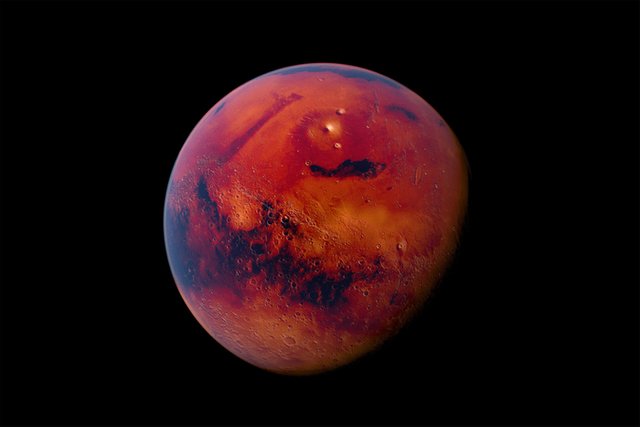Mars - Light, Deep and Uneven

The Personified Mars !!
Suddenly, what will come to mind - if it is said that "features of the planet"? Is not it the distance, size, weight, composition etc from the sun? Under such circumstances, research results have been issued telling that "No matter, density is also important."
The image of Mars that scientists have dreamed of until now is "Rock planet, probably dense, is not it?" However, when American researchers actually made a calculation model, it turned out that it was lighter than we thought. How much is that lighter than the earth.
The Earth's crust has an average density of 2.7 grams per square centimeter, but Mars will be 2.58 grams per square centimeter. Although it may be thought that "it does not differ so much", it seems that this will bring a big meaning to research the history of Mars.
By specifying the features of the crustal structure, we can narrow down to some extent how to form and develop that planet. In particular, the rough average of the crust density is a basic parameter in planetary physics. For example, it is effective to clarify the thickness of the crust, how the topography is supported, and thermochemical development.
In short, understanding the Mars' crustal density makes it one step closer to elucidating how the Martian ground surface is formed, changed and why it came into its present form. Is it like a planet dock?
In the simulation using the gravity model of the low-resolution planet which was done in the past, the density of the rocks and planets was 2.7 g - 3.1 g / cm 2. In this time, we calculate by estimating the data collected by NASA's artificial satellite called Mars Reconnaissance Orbiter, the gravitational field model, and the composition of the topsoil. As a result, although it got a value of 2.58 g / cubic centimeter, it is estimated value and uncertainty are large to the last.
Researcher Tania Harrison at the Space Technology and Science Initiative of Arizona State University told this.
When we created the density map of Mars, we found that there is large unevenness in the density, and the density is higher in the basement or near the volcano. It suggests that the crust is thinner and more porous than previous expectations.
Mrs. Harrison who is not engaged in this research, but she added such excitement as not being able to hide it.
The cool part of this research is in its newly developed calculation method. If you have gravity and topography data for any celestial body, you can apply this method.
When it is summarized by anthropomorphization. Mars seems to be light and has a deep idea beneath it, but turns out to be like a child in the middle of adolescence that is uneven.
